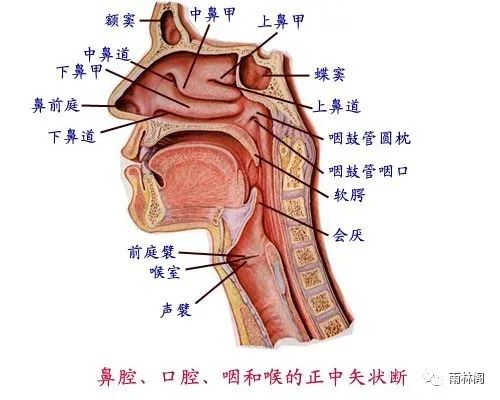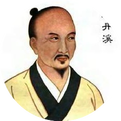
Observation of the throat refers to the examination of the color, shape, and secretions of the throat area, which helps to understand local conditions as well as diseases related to the lungs, stomach, and other associated organs.
The throat is located at the lower part of the oral cavity, at the upper end of the esophagus, connecting to the respiratory tract and the lungs and stomach. It is also a crucial junction where many meridians converge. Therefore, examining the throat can assist in determining the nature of diseases, such as cold or heat, yin or yang, and the condition of qi and blood in the organs, as well as the prognosis of the illness.
The observation of the throat mainly focuses on changes in color and shape, the color, quality, and quantity of local secretions, while also considering the patient’s sensations during swallowing and breathing, along with any accompanying symptoms.
To accurately and clearly observe the throat, the patient should sit upright with their mouth open and tongue extended. The physician uses their left thumb and index finger, holding a sterilized gauze to grasp the patient’s tongue and pull it outward. The index finger pushes the upper lip aside, while the ring and little fingers support the chin, allowing for a clear view of the throat’s color, shape, secretions, ulcers, or other foreign objects. It is also important to note whether these pathological changes occur on one side or both sides of the uvula, or if there are issues with the uvula itself.
In terms of color observation, a normal throat appears pale red and moist. If it is red, it indicates lung and stomach heat; deep red often signifies excessive fire toxicity; red and delicate indicates lung and kidney yin deficiency; if it appears white and dry, with slight pain and worsening pain during swallowing, it suggests deficiency of qi and yin; if it is white, dull, and swollen, it indicates a critical condition of floating yang and leakage of spirit; if it is dark red and swollen, it often indicates phlegm-damp accumulation, qi stagnation, and blood stasis; pale white and swollen usually indicates a deficiency-cold condition.
The key focus of throat observation is its shape. A normal throat is neither swollen nor painful, swallowing is smooth, and the uvula shows no redness, swelling, or ulceration, with a smooth surface and color consistent with the surrounding mucosa.
If the uvula is red, swollen, and enlarged, resembling a silkworm, it is termed “wind-heat uvula,” caused by lung and stomach fire heat or wind-heat attacking the throat, with unilateral cases being milder and bilateral cases being more severe;
If the uvula is chronically enlarged, not red or painful, it is called “stone uvula,” indicating stagnation of pathogenic qi;
If the uvula has white, foul, and filthy secretions, resembling a membrane, and if forcibly removed causes bleeding, it is termed “diphtheria.”
The surrounding area of the uvula is generally referred to as the throat, appearing pale red and moist. If the throat is swollen and painful, with difficulty swallowing, it is termed “throat abscess;”
If the throat swells and hurts rapidly, with excessive phlegm and difficulty breathing, making speech difficult, it is termed “tight throat wind;” if accompanied by locked jaw, it is termed “locked throat wind;”
If there are carbuncles on both sides of the throat, deeply rooted and causing severe itching and pain, it is termed “throat therapy;”
If small tumors appear in the throat, resembling longan, smooth on the surface, it is termed “throat tumor,” due to liver and lung heat stagnation;
If there are small fleshy protrusions in the throat, resembling cherries, non-itchy and non-painful, it is termed “throat polyp;”
If the throat is red, swollen, and burning, with difficulty swallowing, accompanied by exterior heat symptoms, it is termed “wind-heat throat obstruction;”
Generally, if the throat is raised and swollen with a deep red color, and the onset is rapid, it indicates external pathogenic heat or fire toxicity obstructing the throat, representing a real heat condition;
If swelling and pain are not significant or vary from mild to severe, it often indicates lung and kidney yin deficiency;
If the condition has persisted for a long time with diffuse swelling, pale red, and hard texture, with no significant pain, it indicates phlegm turbidity.

The uvula, also known as the “little tongue,” should be pale red and smooth, matching the color of the oral and throat mucosa. If the uvula appears thickened and elongated, reaching the root of the tongue, with a sensation of a foreign body in the throat, it is termed “uvula swelling,” caused by heat toxicity attacking upward, qi stagnation, and blood stasis; if the uvula has blood blisters, it is termed “hanging flag wind,” indicating accumulated heat in the spleen and stomach.
The mucosa of the throat is prone to ulcers and abscesses, and should be assessed in conjunction with color observation and disease progression.
If the disease is in its early stages, with superficial and scattered mucosal necrosis, it indicates heat toxicity attacking upward;
If there are slight ulcers with yellow-red color, it indicates accumulated heat in the stomach and intestines;
If the ulcers have persisted for a long time, are superficial and scattered, with recurrent episodes, it indicates deficiency fire rising; if the ulcers have lasted long, are gray-white, dry and not moist, with no redness or swelling around, it indicates internal injury and deficiency;
If the ulcers are uneven, hard to the touch, resembling a flower turned upside down, it indicates qi and blood stasis, with internal toxicity;
If the ulcers are swollen and painful to the touch, they are likely to heal easily;
If they are painless and unresponsive, it indicates necrotic tissue;
If there is local erosion, it is termed “throat wind,” often developing from throat abscess, acute throat obstruction in children, or diphtheria;
If the throat shows red and swollen ulcers, scattered in spots of varying sizes, with white spots surrounded by red halos, it is termed “throat sore,” indicating external wind-heat or kidney channel deficiency fire attacking upward;
There are also cases caused by the toxic effects of bayberry, resulting in swollen and rotten protrusions in the hard palate or throat, appearing as spots or patches, with yellow or white colors, potentially invading the nasal passages, making them difficult to treat;
If blood blisters appear in the mouth and palate, initially purple, and after rupture lead to erosion with severe pain, it is termed “flying bayberry throat,” caused by accumulated heat in the spleen and stomach;
If the throat is dry and painful, red and swollen, with ulcers producing yellow foul liquid resembling moss, it is termed “yin deficiency throat fungus;”
If there are millet-sized vesicles in the throat, glistening like pearls, purple-red or yellow-white, which ulcerate after rupture, it is termed “curtain pearl throat,” also known as “wind-heat throat obstruction,” indicating accumulated heat in the spleen and stomach attacking upward;
If the throat and uvula are red, swollen, and painful, with ulcers making it difficult to swallow liquids, and accompanied by rashes on the neck, chest, and abdomen, it is termed “epidemic throat rash” or “rotten throat rash,” which corresponds to modern “scarlet fever,” caused by lung and stomach fire heat rising;
If tumors develop in the throat, leading to erosion and damage to muscles and bones, it is termed “bayberry throat fungus,” also known as “heavenly white ant,” caused by bayberry toxic qi obstructing the throat.
If the throat is red, swollen, and raised, with surrounding red halos, and high fever that does not subside, it indicates the formation of pus;
If pressing on it causes it to soften and sink, it indicates that pus has formed;
If the pus is yellow and viscous, it indicates a real condition;
If it is clear and flows continuously, it indicates spleen deficiency with damp stagnation or genuine deficiency;
If pus is easily expelled, it indicates abundant righteous qi, and healing occurs quickly;
If pus is difficult to eliminate, it indicates deficiency of righteous qi, and the ulcerated area is also hard to heal.

This public account regularly shares knowledge about traditional Chinese medicine, and you are welcome to scan the code to follow!
This article references “Essence of TCM Diagnosis” edited by Wang Mian and Zhang Dengben, published by World Graphic Publishing Company.


